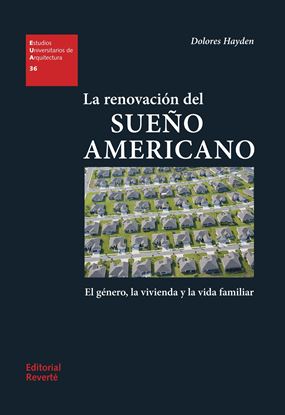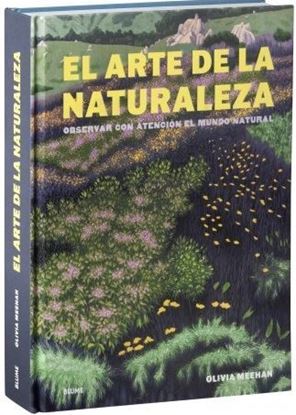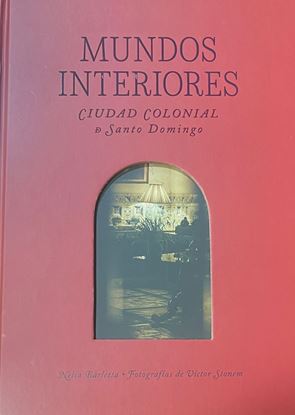

LA RENOVACION DEL SUEÑO AMERICANO
Este libro se publicó originalmente en 1984, con una segunda edición, revisada y ampliada, en 2002, que es la que se presenta aquí en versión española.
Dolores Hayden aborda el mito del 'sueño americano' y estudia unos modelos más satisfactorios de vivienda, trabajo y vida familiar en los Estados Unidos, así como en otros países donde el trabajo remunerado de las mujeres ha creado tensiones similares.
Primero se hace un recorrido por la historia de los tipos de viviendas desde la época colonial, con especial atención a la casa unifamiliar suburbana, y se analizan los retos para esa 'casa de ensueño' planteados por ambientalistas, grupos de mujeres y defensores de los derechos humanos.
Luego se identifican las necesidades y los deseos más profundos asociados al ideal de hogar, y se describen tres modelos de vivienda: la 'estrategia del refugio', la 'estrategia industrial' y la 'estrategia del vecindario', de los que se analizan los puntos fuertes y débiles. Además de las experiencias estadounidenses, se incluyen ejemplos de China, Cuba, Dinamarca, Suecia y Rusia.
Por último, se examina la relación entre los proyectos de vivienda y el espacio público; se estudia en qué circunstancias y lugares la vivienda coincide con el desarrollo comunitario; se considera la rehabilitación del tejido de viviendas y barrios; y se incluyen muchos ejemplos de proyectos experimentales realizados por particulares, grupos pequeños y gobiernos locales y nacionales.
1,995
1,596
EL ARTE DE LA NATURALEZA
La naturaleza nunca ha sido tan vibrante. Contemple la belleza y el poder del mundo natural, desde volcanes y mares tempestuosos hasta bosques resplandecientes y estrellas fugaces.
Esta observación guiada de la naturaleza ofrece una forma totalmente nueva de contemplar el mundo.
Un increíble compendio de la historia del mundo que nos rodea, contada a través de pinturas, dibujos, esculturas, textiles y artes decorativas.
2,800
2,240
PRINCE. LA HISTORIA DETRAS DE SUS 684 C.
Después de dos álbumes teñidos de funk y disco, Prince Rogers Nelson se convirtió en el maestro del Minneapolis Sound en 1980 con su tercer álbum, el sulfuroso y acertadamente llamado Dirty Mind.
Desde sus primeros discos para Warner Bros. Records, el hombre que pronto sería apodado el Kid de Minneapolis dedicó su vida a una abundante y variada producción musical.
Prince atravesó la década de 1980 con una irreverencia y audacia que lo caracterizarían. Después de encadenar varios éxitos (Little Red Corvette, Purple Rain, Kiss, Sign O' The Times o Batdance) y más de 100 millones de discos vendidos, Prince supo reinventarse con cada uno de sus discos, burlando las predicciones de quienes lo creían muerto, resurgiendo constantemente de las cenizas, y siempre sorprendiendo a través de nuevas direcciones artísticas.
De Madonna a Miles Davis, de Michael Jackson a Kate Bush, todos los grandes nombres de la música popular quisieron grabar con él. Tras la inesperada muerte del cantautor en 2016, The Prince Estate ha trabajado para exhumar de The Vault, su bóveda acorazada de Paisley Park (su casa-estudio), álbumes preciosos hasta ahora inéditos. Miles de canciones aún reposan allí; cada lanzamiento es un evento global.
3,995
3,196
TAYLOR SWIFT. LA HISTORIA DETRAS DE SUS.
Un recorrido fidedigno por la carrera de la cantante más influyente de toda una generación.
Un análisis de 248 temas y (pronto) veinte años de éxitos, como ningún otro libro lo ha hecho antes, en un repaso de la trayectoria de una joven apasionada por el country, ridiculizada en sus inicios por sus elecciones artísticas y que ha sabido transformar cada dificultad en un triunfo.
Desde sus modestos comienzos en Nashville, donde firmó su primer contrato a los quince años, hasta sus 11 Grammy Awards, pasando por las tormentas mediáticas a las que ha tenido que enfrentarse, Taylor Swift ha sabido imponer su voz y su estilo.
3,600
2,880
EL LIBRO DE LAS SOMBRAS
Una selección inédita de más de trescientas pinturas, dibujos y grabados de espectros, demonios, hadas y brujas.
Un periplo mágico e inquietante al mundo de las sombras, de la mano de 150 maestros.
Una bella y sobrecogedora selección inédita de pinturas, dibujos y grabados del Romanticismo, el academicismo, el simbolismo y el prerrafaelismo, con la colaboración de expertos en historia de la magia, el espiritismo y la demonología.
3,995
3,196














